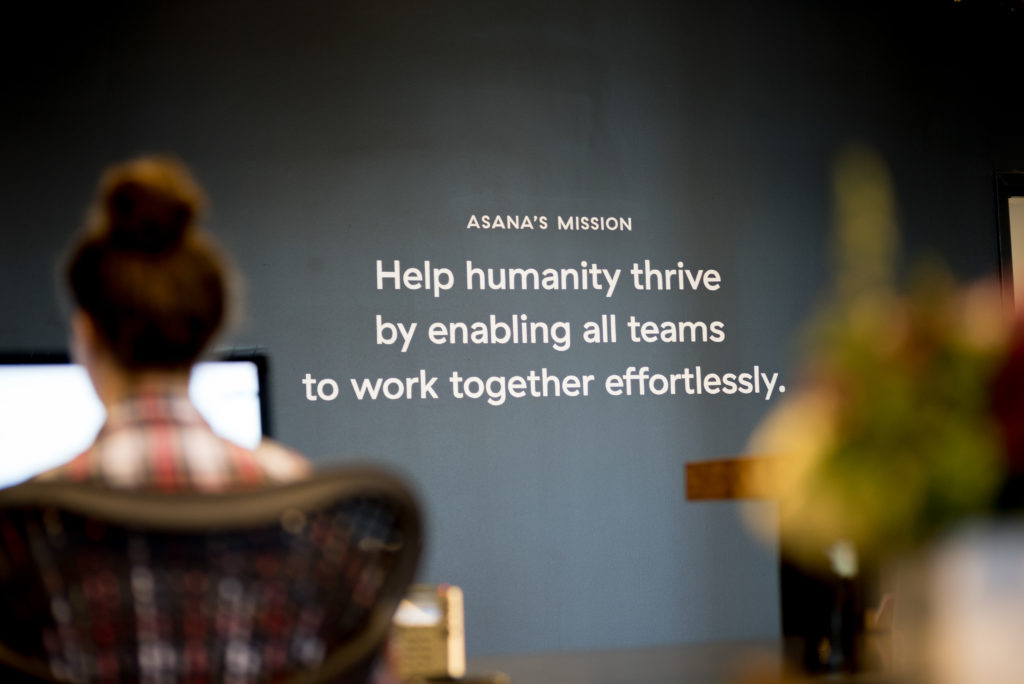How to define your team’s mission

Spread ideas. Belong anywhere. Organize the world’s information and make it universally accessible and useful. Accelerate the world’s transition to sustainable energy.
These are the mission statements of TED, Airbnb, Google, and Tesla.
As the articulation of your company’s purpose, a mission statement creates clarity of your true north, the reason why you do the things you do, and how everyone’s work ladders up to the bigger picture. From prioritizing bugs to making key branding decisions to product roadmapping, every decision can be made based on the question, “Which choice would be most in service of our mission?”
Many teams, though, generally write their mission statement as an afterthought. They focus first on the product, or the market, or the sales pitch.
But without an answer to the question “why,” it’s difficult to know which feature to develop, what markets to first enter, how employees should collaborate with one another, or how to make the millions of micro-choices required to build an organization. This is true for entire companies as well as individual teams.
So how do you hone in on the right set of words?
Articulating Asana’s mission
In the early days of Asana—before the big roadmapping and all-out recruiting—we paused to find the right words to capture our purpose. This was not so we could feel warm and fuzzy—a sense of purpose impacts every part of the business, from how we spend our time to how we create brand clarity among customers.
It also impacts employee retention. One study found that employees are 2.3 times more likely stay in a position if there is a feeling of purpose. That number jumps to 5.3 times among millennials.
For me and my co-founder Dustin, this process was as much about self-reflection as market analysis. We needed to dig deep to find exactly why this new company needed to exist. It wasn’t easy, and the roadblocks were both internal (What are we really doing?) and external (Will these words translate to others?).
But the result—that Asana is a company clear on its mission to help humanity thrive by enabling all teams to work together effortlessly—was worth it.
Here’s how we found the right words to capture our mission, in three phases:
Phase 1: The idea-generation phase
Part brainstorm, part brain dump, this phase is about surfacing ideas without judgment or filter. Get in a room, get a whiteboard (or post-its, or chalk, or whatever), and have at it! A neutral facilitator in the room can help participants stay creative, exploring all possible answers to the question “Why are we doing this?”
In fact, don’t just ask that question—keep asking it to drill in on important conversations. Why are we building this software? But really… why? Why now? Why this company? The early Asana team challenged one another to answer layers of this on both a company and personal level. The goal is to pinpoint what really matters.
In the idea-generation phase, no ideas are bad ideas.
Phase 2: The analysis phase
In this step you shift from idea generation to curation, determining which combination of words, phrases, and ideas captures your team’s reason for existing.
At Asana, we established a set of criteria, then reviewed and debated the options to determine which satisfied all parameters. For each phrase or concept, we asked, “Is this idea…”
Audacious?
If we achieve this, have we done something amazing relative to our ambition? Mission statements are at their core sources of inspiration. This is a time to be bold, even edgy. Be aspirational; this is about what you’re creating in the world, not just what you’re eliminating.
Speak at a human level, describing the human need that’s being satisfied. Avoid jargon.
Imaginable?
Even if your statement is wildly audacious, someone should still read it and think, “Yes, I can imagine a world in which that has come true.” When Microsoft wanted to “put a computer on every desk and in every home,” that sounded so far off from reality that it was almost hard to imagine—but only almost.
It’s even okay if it’s only asymptotically achievable. Google may never organize all the world’s information, and Asana may never make working together completely effortless, but we can imagine getting closer and closer over time.
Approachable?
Speak at a human level, describing the human need that’s being satisfied. Avoid jargon. Teammates should be able to say your mission statement to their friends and family and have each person get excited over this potential shared future. It’s worth getting a diversity of opinions, since different people react differently to different language.
Complete?
Are there things that we know in our hearts we’re going to want to work on that don’t fall into this statement? If so, how can we abstract the statement to be inclusive?In one draft of Asana’s mission, we had “Asana builds software to help teams work together.”
But when we thought about what we’re really passionate about, we realized that we were excited to help teams collaborate in ways beyond software, like offering hands-on support, building an online community, and sharing learnings about team culture. So we dropped “software.”
Specific?
Does the statement act as a compass, clearly outlining what is (and isn’t) possible for your future? Or are there ideas that technically fit in the statement, but you’d never work on them, even with an endless budget and a 100-year timetable? If it’s the latter, ask yourself how to clarify to be more specific. Challenge yourself to use ever-more-accurate vocabulary.
Pithy?
You want everyone in your company to be able to recite this statement from memory. It’s going to be on your website, your t-shirts, your wall. To make it maximally memorable, how can you make every word count, and wordsmith it down to its core essence, like a line of poetry?
An early draft of Asana’s mission was “to help every group of people on Earth to work together more easily, to coordinate their collective action so they can achieve their goals and manifest their potential.” This is 28 words. Our final mission statement is 12. The 28-word version doesn’t say anything the 12-word one doesn’t also include.
Precise?
Think about the meaning of each word. Look into its actual definition, etymology, and connotation. Does it say exactly what you want to say? For Asana, more specific than groups of people (which could include loosely-affiliated networks of people, like a Reddit forum), we wanted to focus on teams: groups of people who had come together with an explicit shared purpose and identity.
Run ideas through the above questions as much as needed. Continue to hone in, mix and match, iterate, and keep making more concise, until your mission statement satisfies all the criteria.
Phase 3: Call it done
It can be tempting to debate each word choice over, and over, and over. Don’t let the perfect be the enemy of the good. Committing is more important than wordsmithing endlessly.
Finally, establishing a mission statement can feel stressful and high stakes: Incorporating mindfulness will help you and your team stay centered and connected.
A few tips:
- Incorporate stakeholders. Depending on your team’s size and/or complexity, it may make sense to kick off the idea-generation phase by asking for contributions from staff, investors, or others familiar with your ideas. We sometimes don’t know what we don’t know. Inviting others to the process widens and deepens perspective.
- Make this more than an intellectual exercise. Start by centering and getting your team to tune into their emotions. Brainstorm, but also heartstorm :-P. Write things down that flow out of you even if they don’t make sense at first.
- Stay inspired and connected. Remind yourselves that this is about the space between one another, the purpose that has brought you together. Watch an inspirational video of someone experiencing the problem you’re trying to solve. Put a toy narwhal in the center of the table—whatever fits your unique togetherness.
- Take breaks. Sleep on it. There’s so much your brain does during rest that you can’t achieve by forcibly trying to figure it out. This can also help separate the pride of creation from the objectivity of curation—seeing your own words a day or two later sometimes yields great perspective.
This process, while intense, can yield great fruit. So great you’ll want to post it on your walls.

More Issues
